TCL NXTWEAR S review: Can XR glasses change your workflow?
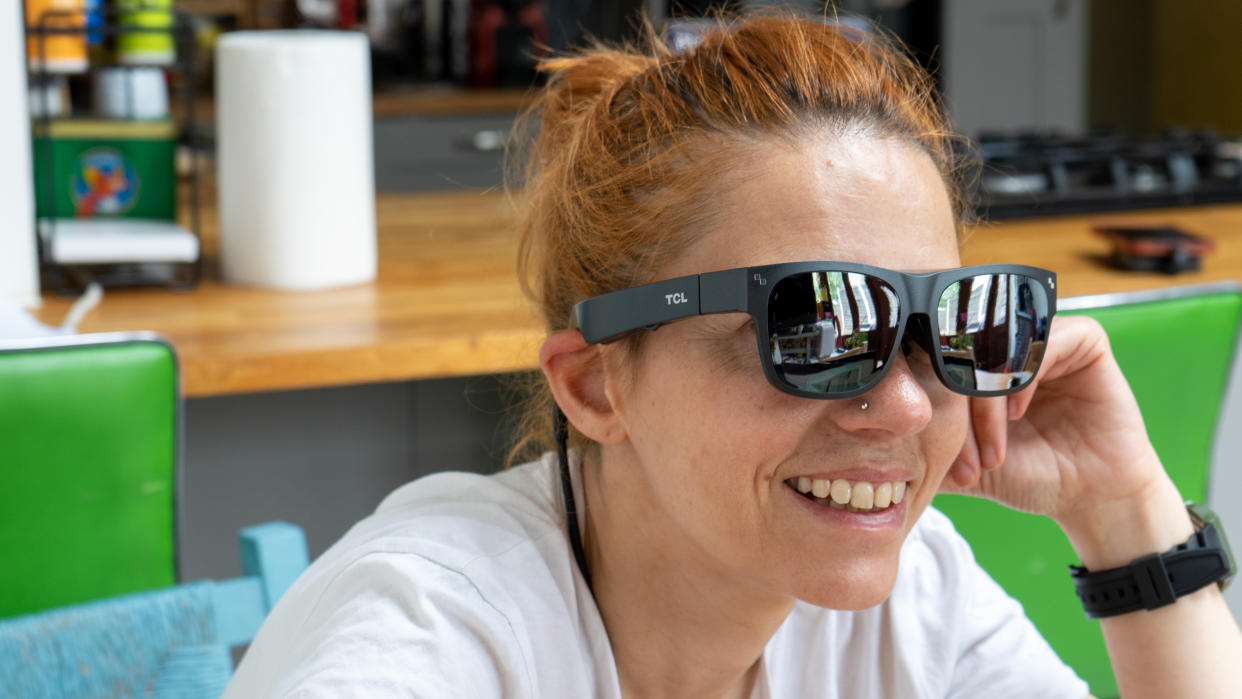
In the wake of the Apple Vision Pro, developers are scrambling to – if we're honest – decide whether there will even be a bandwagon. TCL's NXTWEAR S, or Rayneo XR as it is also called, is a product of more modest ambition, but one you can buy right now.
Rather than promise to revolutionize the world of tech at a not-entirely-specified future date, and require a lot of your pockets and developers in the meantime, the NXTWEAR S offers a portable screen that – for many – will fulfill much of their desires.
With dual OLED displays at 1080P for each eye, the NXTWEAR S is capable of displaying 3D video – should you choose – or virtually any other video signal fed via USB-C lead. Android phones can do that off the bat, but the legions of iPhone users haven't been forgotten either.
For this test, TLC supplied me with a Mirascreen portable adapter that can accept video from other sources including, crucially, a Lightning port. This neat box is also a portable power supply and can magnetically attach itself to a phone, limpet style, to make a relatively convenient package.
The question is – especially for photographers and videomakers – can these glasses serve as a useful additional display?

Specifications
Display tech: Dual OLED sRGB 108%
Resolution: 2 x 1080P
Pixel Per Degree: 49
Diopter adjustments: 1x myopia adapter included
Contrast: 100000:1
Comfort adjustments: 2x swappable nose bridges
Weight: 89g on our scales (81g on specs)
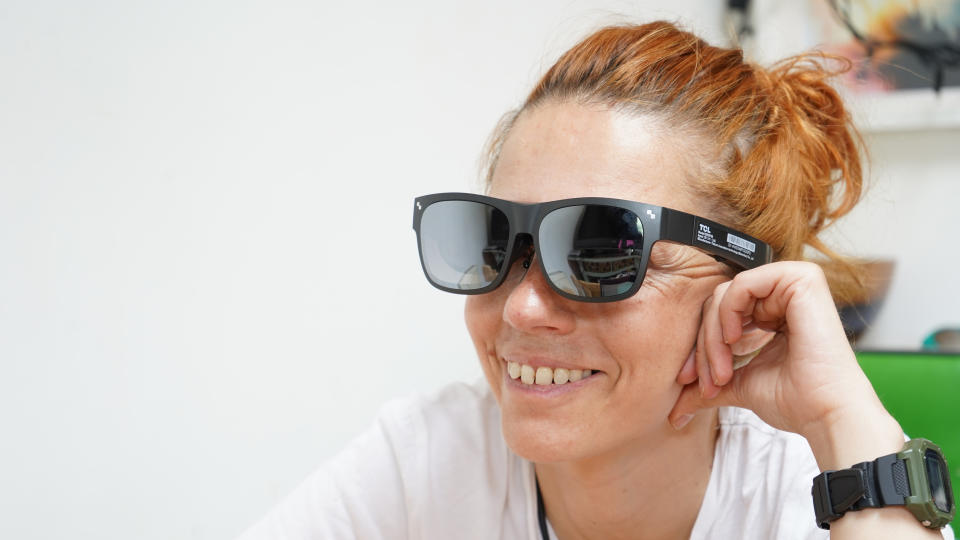
Key features
These glasses have dual OLED displays at 1080p a piece offering a bright image projected over a fully or partially transparent background depending on whether you attach the sunglasses at the front. Power comes from the connected device, or a combined adapter and battery unit.
That's either a 130-inch or a 201-inch display at 6m (19.6ft) distance, depending on which of the specifications I read – I suspect the larger, to be honest!
In either case, the cable which connects to the glasses has a MagSafe-inspired connector, meaning the device itself has a relatively low weight and, if you have a pocket, can be quite portable. It can connect to a number of devices (more later) and for Android devices with Display Port also comes with an app that opens up 3D and motion-based functionality.
The box contains two swappable nose bridges so the glasses can rest on different-sized noses, and a single myopia adjustment we didn't need to test. From the right device, 3D is on offer too.
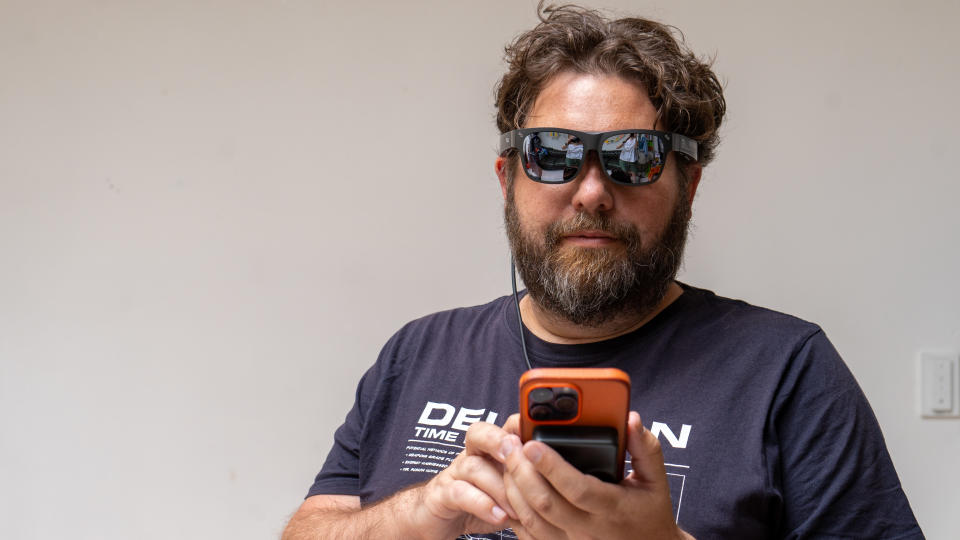
Build and handling
If you weren't already sure this was an optical product all the peel-off plastic would give the game away. But behind all that is a pretty convincing feeling set of slightly chunky sunglasses. Aside from the serial-number sticker on the outside (why?) of the left arm, they look quite good. Unobtrusive, at least.
The replaceable nose bridge is essential. The one fitted meant I couldn't see the whole screen but, once I'd use the included screwdriver to swap it things got a lot better. This process would be a lot easier if the screwdriver had a magnetic tip.
Connecting to a MacBook Pro (as I did, was as simple as plugging into the USB-C port. The machine recognized a 1080P display and the glasses came to life.
Connecting to an iPhone required the Portable Adapter, included in my review kit. This has a battery (to power the glasses), a socket for the glasses, and a second for the source – in this case a handy mini Lightning cable. This is something sold separately, and called itself a MiraScreen – it shows up on Amazon as TLC Portable Adapter.
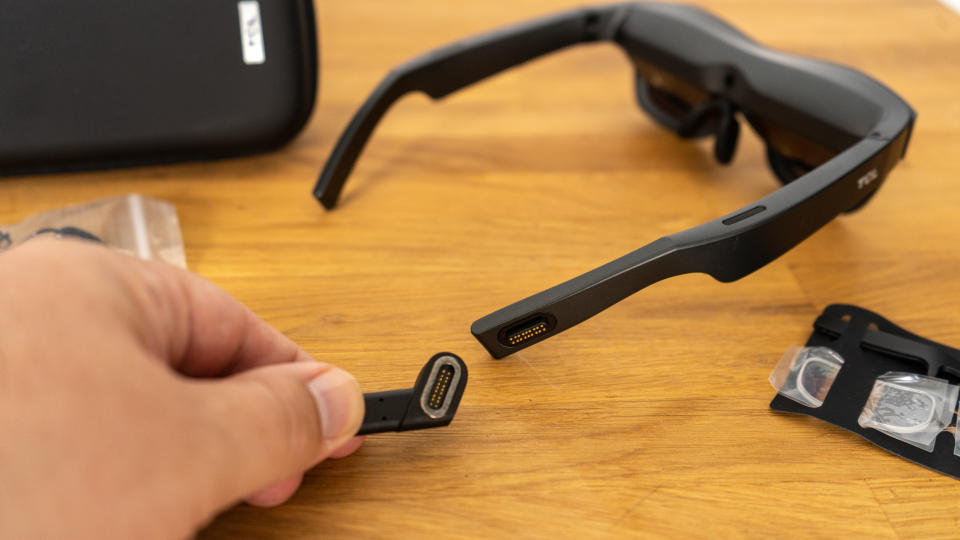
It may also be bundled with the glasses in some places; it also serves as a power pack with 2-3.5 hours of battery.
In this test, both I and my partner, who wears glasses, tried the device and neither of us needed the prescription adapter.
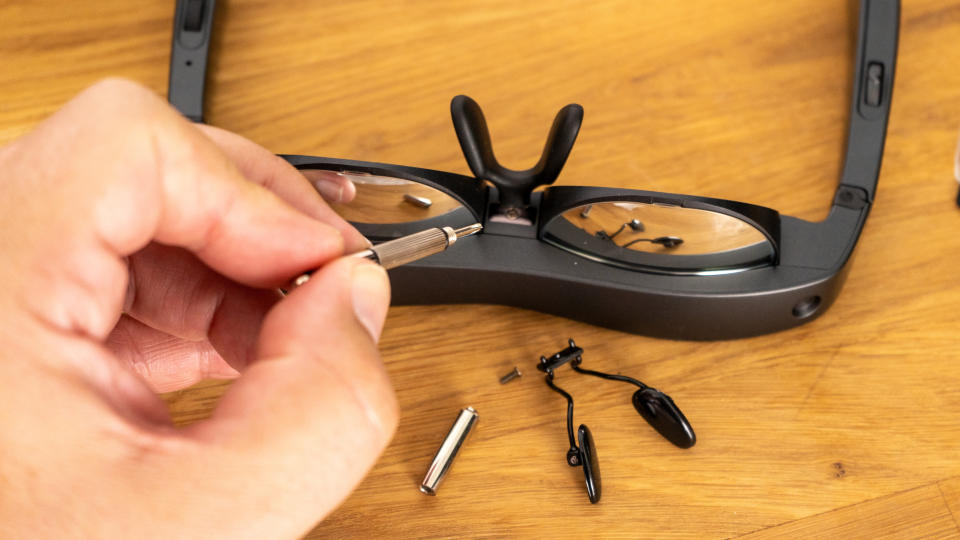
The picture above shows the swapping of the bridge, but you can also the the shiny silver glasses. These are still partially transparent from the users view, but must remain fixed to the frame, unlike the sunglasses front which attaches magnetically, There is a recess in each top corner which looks like it might do something high tech, but is just a rest for a notch in the sunglasses component.
Performance
It's hard to be scientific here, so I can only describe the picture as I saw it. The image was, save for the far corners, pretty clear. Saturation seemed slightly too strong to me – certainly compared to my iPhone screen when I looked down – but for extended video viewing this is a matter of taste, and for gaming it fades into the background. If you're lucky enough to be able to game, that is.
The performance was very significantly affected by the connection method. When using a computer, so only the goggle's adapter cable was involved, everything felt very snappy (as it would with a phone alike the Galaxy S23 which supports DisplayPort/DP).
TCL pointed out to us that it's also possible to source an HDMI adaptor for consoles such as the Nintendo Switch, but Steam Deck offers native support for DP so there is the opportunity of snappy gaming.
On my iPhone 14 Pro Max, however, there did seem to be some lag. It is possible to see the phone screen in the gap below the glasses and when mirroring there is a clear lag plus the saturation on the glasses seems more aggressive. If you start a video it will play on the goggles, but there is definitely a grinding of metaphorical gears.
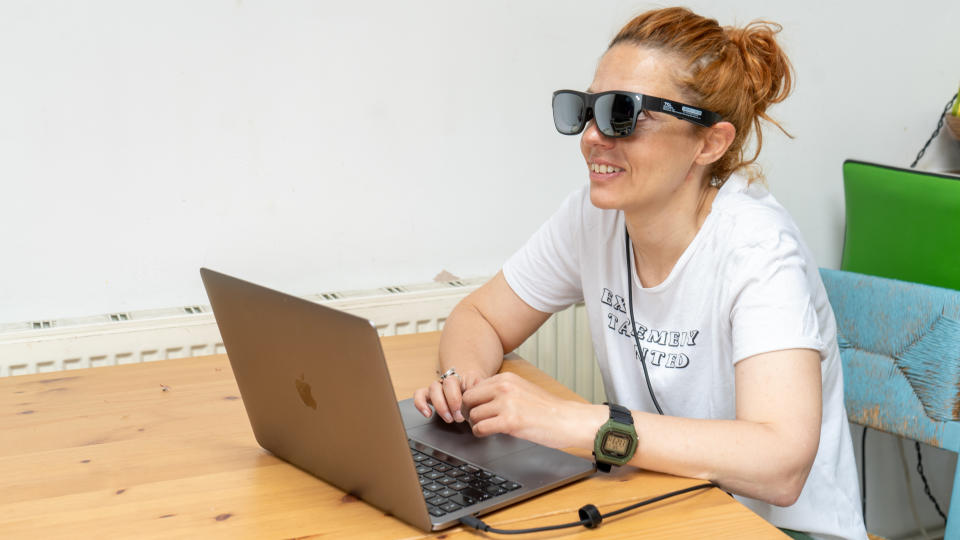
The conclusion I'm forced to draw is that the glasses themselves can do the job of displaying a 1080P image, but the adapter struggles at both a processing level and to form a happy relationship with iOS as a video output method.
That, in turn, begs the question I am equipped to answer, which is "Is a 1080P display – so big and close – a good idea?" For watching a feature-length movie in one go, I'd say not. For precise still image editing, the quality feels imperfect, especially near the edges. But for checking a shorter section of video, or a YouTube posting, it's actually a decent solution.
The instructions suggest taking a 20-second break every 20 minutes. If you wore them on a flight to watch an entertainment of your choice, that wouldn't be so bad.
Verdict
Without meaning to sound unduly surprised, the impression I come away with from these is "You know what, it's kinda cool... but..." Acknowledging that, at this price, 1080P is a reasonable limit, sound quality is good, and in terms of physical design this is definitely at the better end of AR glasses, looking less 'weird' in public. The "But" in question isn't really the device – it is more the ecosystem – that is something you might have a better (or worse) experience with.
Plugging straight into my MacBook and using via the Thunderbolt/Displayport tech is by far and away the easiest (and I have no doubt would be even better on a machine friendly to 3D DisplayPort, which includes many modern Android phones). When, however, DisplayPort isn't supported you're left depending on the external MiraScreen and this is where things fall down, fast. Or, rather, slowly.
As I mentioned, the device introduces a bit of a lag – say 0.5 to 1 second for every button press – plus the irritation of having to look down to the iPhone's screen every time something seems to go wrong. And that's a lot since so far as I can tell no media-playing apps (TV, Netflix etc.) want to play ball with it, leaving you with web video and little else. Others didn't outright refuse, they just waited indefinitely. In terms of other of low-latency game-playing any other technologies, they'll be hopeless unless you can use the Display Port connection.
Sadly Android phones are a bit inconsistent on this, but at least some do support it. If your phone does there is a good chance the TCL AR app will offer more functionality than I was able to test, and on the move, too. Otherwise, well, the star rating is for the glasses; the MiraScreen would get less!
• If you're looking for alternative portable displays, the iPad can expand a Mac's screen so see our list of the best iPads, or, if you do have the space, the best monitor for photo editing.

